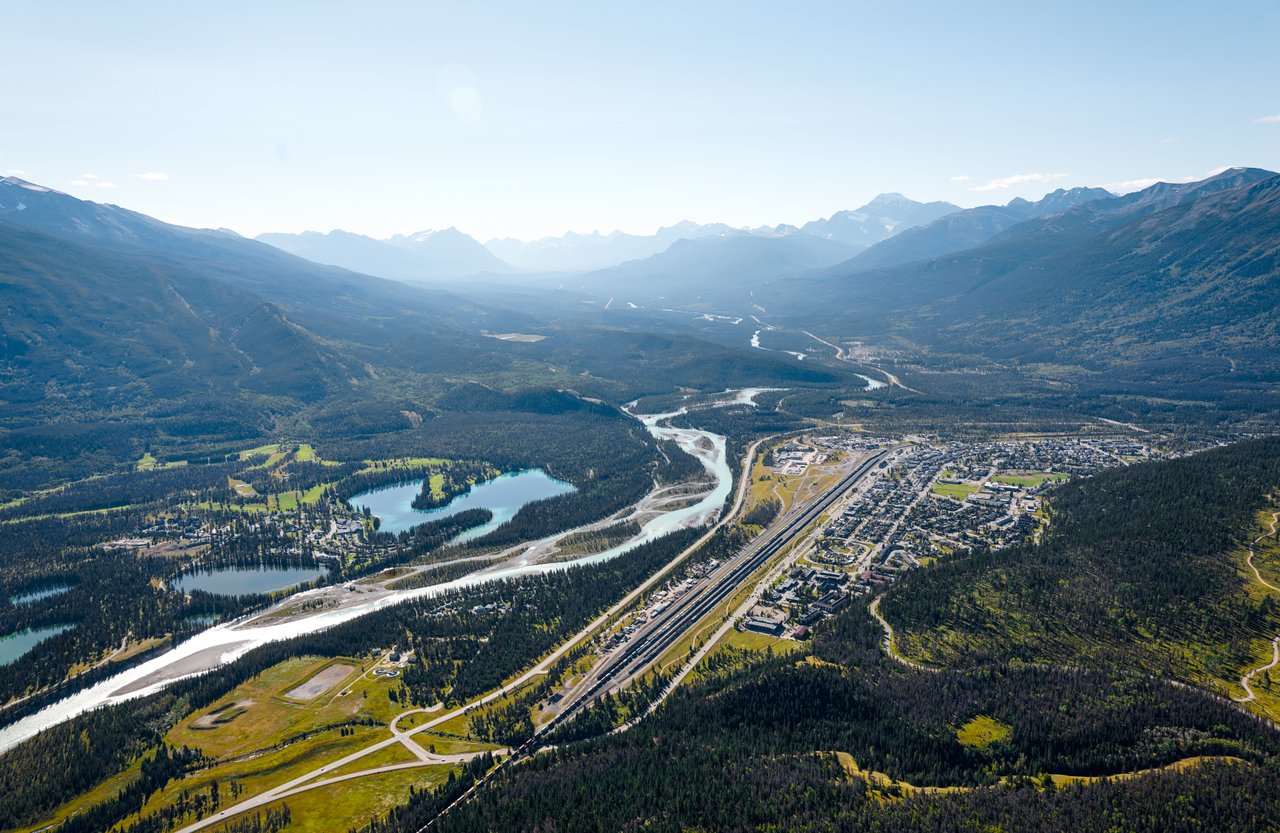Forest products sector plays role in reducing fire risks
Harvesting trees can be used to keep communities safer, say experts

Jasper, Alta. is surrounded by trees, making prescribed burns difficult for fire prevention. – Celina Frisson
Key Takeaways:
- Climate change is making wildfire risk higher.
- Officials are looking to identify high wildfire risk areas near people and cities that could benefit from fire prevention efforts.
- In some cases, this means partnering with forest products companies to harness logging activity for fire prevention.
The Whole Story:
Nope, it’s not just haunted house fog that wafted through Metro Vancouver this October. Once again, B.C. residents were blanketed in wildfire smoke.
But experts say the country isn’t helpless when it comes to addressing wildfire risks and the wood products industry can play a role in keeping skies clear and communities safe.
Kate Lindsay, senior vice president and chief sustainability officer at Forestry Products Association of Canada, explained that climate change is creating conditions for hotter, less controllable wildfires.
“That’s what we have seen, particularly in B.C., but we are seeing it in all parts of Canada to be honest,” she said.
Lindsay noted that B.C. recently updated forestry law to identify wildland fire urban interface areas (WUIs). These are lines, areas, or zones where structures and other human development meet or intermingle with undeveloped wildland or vegetative fuels.
“What the B.C. government has done is allowed those WUIs to have flammability ratings done, so some will be more flammable and a higher risk for fire,” said Lindsay. “The hope is that this will allow forest managers to take those high-risk WUIs into consideration for thinning and fire break creation.”
And after trees are harvested, more fire-resistant species can be planted in their place.
These efforts can be partnered with programs like FireSmart, which seeks to improve communication with stakeholders; and to organize programs and assets into a logical, manageable structure based on three pillars – homeowners, neighbourhoods and communities.
“It’s about people understanding what the risks are around wildfires and the steps they can take to mitigate wildfire risk,” she said. “It’s a whole-of-society approach that works at multiple scales: homeowner, community and landscape scale.”
In some cases, this can lead to beneficial partnerships with the forest products sector. Lindsay cited a recent example of this in Jasper, Alta. Beginning in late 2018, Parks Canada contracted Canfor, a forestry products company, to log dead and dying trees in mountain pine beetle affected forest west of the city in an area known as Pyramid Bench.
“People want to have nature be relatively free from human intervention, but what we are finding is that national parks are under a lot of climate change stress,” said Lindsay.
David Argument, resource management officer for Jasper national park, explained in a video on the project that the city was too close to the affected area for safe prescribed burns.
“Logging at this scale in a national park is not something that we really do, so we had to weigh the visitor impacts and ecological integrity of the site with the need to reduce the fire risk.
Kari Stuart-Smith, senior forest scientist at Canfor, explained that the project included strict requirements to limit impacts to the soil, animals and trails.
“One of the key lessons from this project is that logging can be used to reduce the fuel hazard in extremely sensitive areas,” she said.

